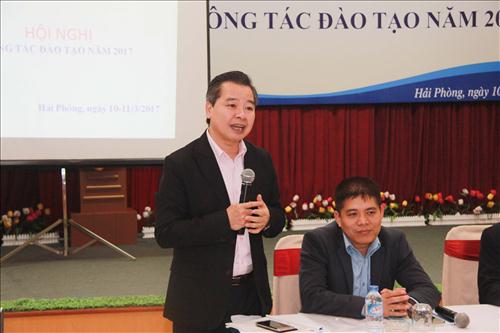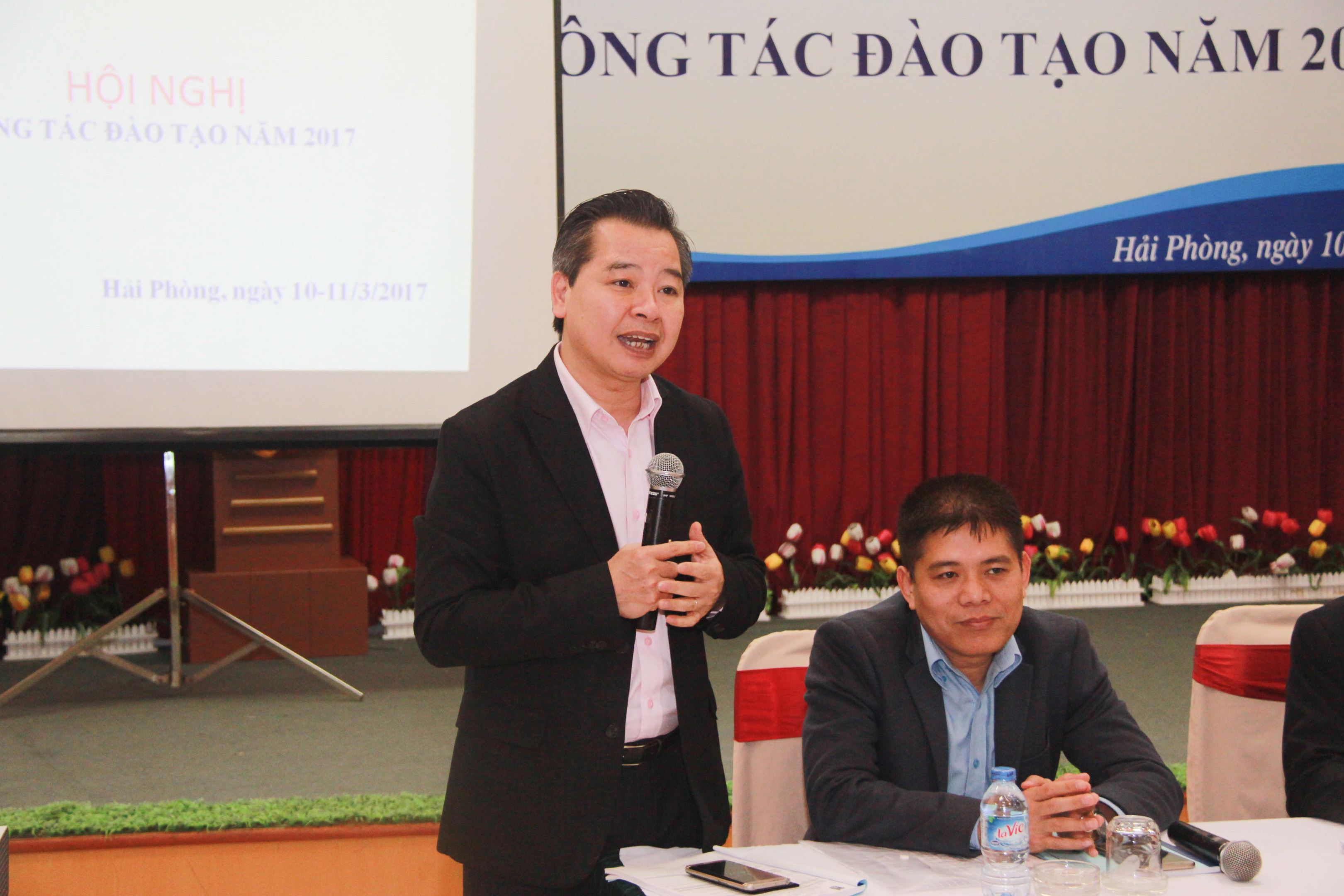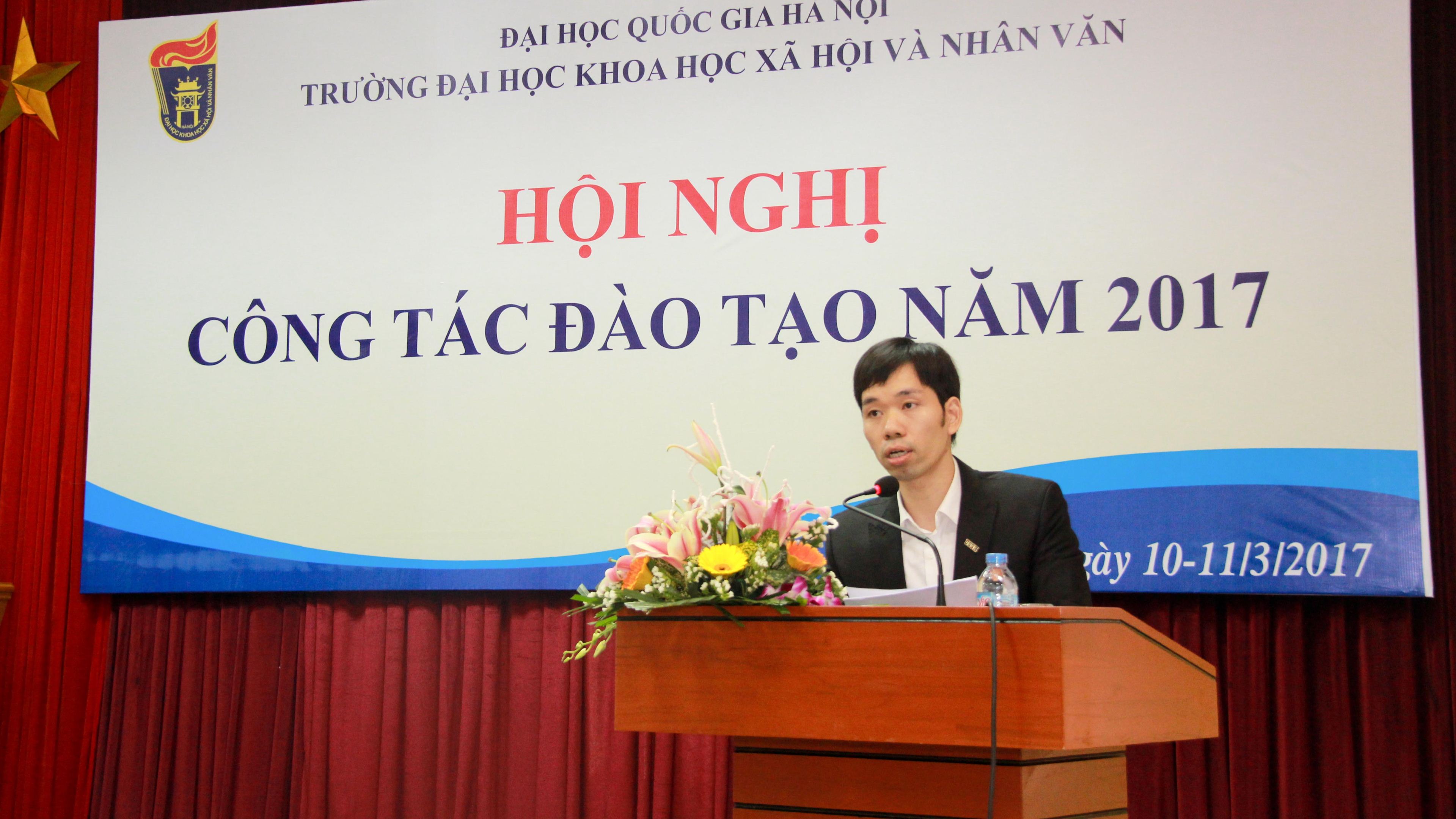

Prof. Dr. Pham Quang Minh, Principal of the School delivered the opening speech at the training conference.
After the opening speech of Prof. Dr. Pham Quang Minh, the delegates listened to the report on the results of 10 years of credit training at the University of Social Sciences and Humanities, VNU.
Results achieved after 10 years
After 10 years of implementation, it can be affirmed that the entire staff and lecturers of the School have been unanimous in the work of applying, deploying and innovating to achieve the highest efficiency in applying the credit-based training method at the University of Social Sciences and Humanities, VNU.
Since 2006, the school's training program system has undergone 6 adjustments to adapt to the credit-based training method. If in 2006, the starting year of the credit-based conversion process, the training program system was mechanically transferred from the year system to the credit system, then in the next 3 years, the training program system was adjusted to better suit this new training method. In particular, 2012 marked a fundamental change when all training programs were built and adjusted according to output standards. By 2015, the training program system continued to be adjusted to better suit the new regulations.
Looking back at the 10-year journey of adjustment and improvement, experts have commented that, in general, the quality of training programs has been improved, the arrangement of subjects in each training program has been selective, the rate of connection and linkage between majors in the school and between schools in VNU has been increased, basically consistent with the credit-based training method.
The compilation of course outlines has also been comprehensively carried out in all training programs. Nearly 2,500 course outlines have been compiled and adjusted. The work of compiling textbooks, lectures, and reference materials has made strong progress. In the past 10 years, the School has organized the acceptance of 341 lecture textbooks, 77 translated reference materials, and continued to sign contracts for compiling 357 textbooks, lectures, and 94 reference materials at the university level.
Training and training management have maximized the flexibility of credit-based training in planning. The process of organizing training activities has had the active participation of lecturers and students. The learning outcomes of learners have made encouraging progress. The interconnection and linkage in management and training organization between units in the school and in the national university are increasingly effective. This has helped the school simplify administrative procedures, management processes and training organization.
Teaching, testing and assessment methods have been comprehensively innovated in the direction of promoting students' positivity, initiative, creativity and application of knowledge and skills. Facilities and equipment have increased significantly. The area of lecture halls, practice rooms and offices has been expanded; the system of equipment serving teaching and scientific research has also been invested in, supplemented and upgraded.
The external assessment teams of AUN and VNU both assessed that the training programs of the University have a reasonable structure, balance between the contents and orientation to achieve the announced output standards.

MSc. Dao Minh Quan, Deputy Head of Training Department, is presenting a summary report on 10 years of credit-based training at the University of Social Sciences and Humanities.
Challenges on the road ahead
In addition to the achievements, over the past 10 years, the credit training method has also posed many challenges for the School in the coming time. Specifically, the university admission method is unstable, causing many difficulties for admission work; Training programs still lack pioneering, specific, and interdisciplinary majors; Some training programs, especially basic science majors, have specialized content that is still slow to change, and output standards are not really clear; The quality of trained human resources has not yet met the needs of the labor market, especially the market that requires high-quality labor; Information technology infrastructure for training, research, and administration is still not synchronized, and data overlaps; Testing and evaluation work is still an issue that deserves attention; The ratio of lecturers to students is still high, lecturers with the ability to teach international programs is still low and the challenges of the 4th industrial revolution have a great impact on higher education in the coming time.
Speaking on this issue, Prof. Dr. Pham Quang Minh, Principal of the School noted: "The credit training method has become a popular method in most universities. The goal of the method emphasizes the initiative of the learner and the guidance of the teacher, but when applied in practice at the school, it seems that this factor is still "half-baked", not yet fully developed. Evidence of this is the lack of freedom in registering for courses in the training process, students are not yet proactive in learning, learning resources are still lacking and the school has not yet had timely forms of rewards and encouragement for students who graduate early... This requires us to continue to have timely adjustment plans, aiming at the goal of improving training quality and international integration.

Overview of the conference
Faced with that challenge, regarding student training and management, the School will arrange and restructure the majors and majors; adjust training programs in the direction of increasing connectivity and linkage to create a favorable mechanism for learners to be able to connect between levels, majors and training programs.
The school will aim to innovate and improve the training management system; increase the responsibility of managers and specialists. Build an open educational resource system to anticipate the trend of building a 4.0 university according to the philosophy of liberal education and creative freedom.
Innovate investment policies for lecturers to compile textbooks and publish reference materials based on the classification and stratification of textbooks and learning materials. Strengthen the work of understanding the employment situation of students after graduation, and establish a network of alumni by faculty and course.
Author:Hoai An
Newer news
Older news